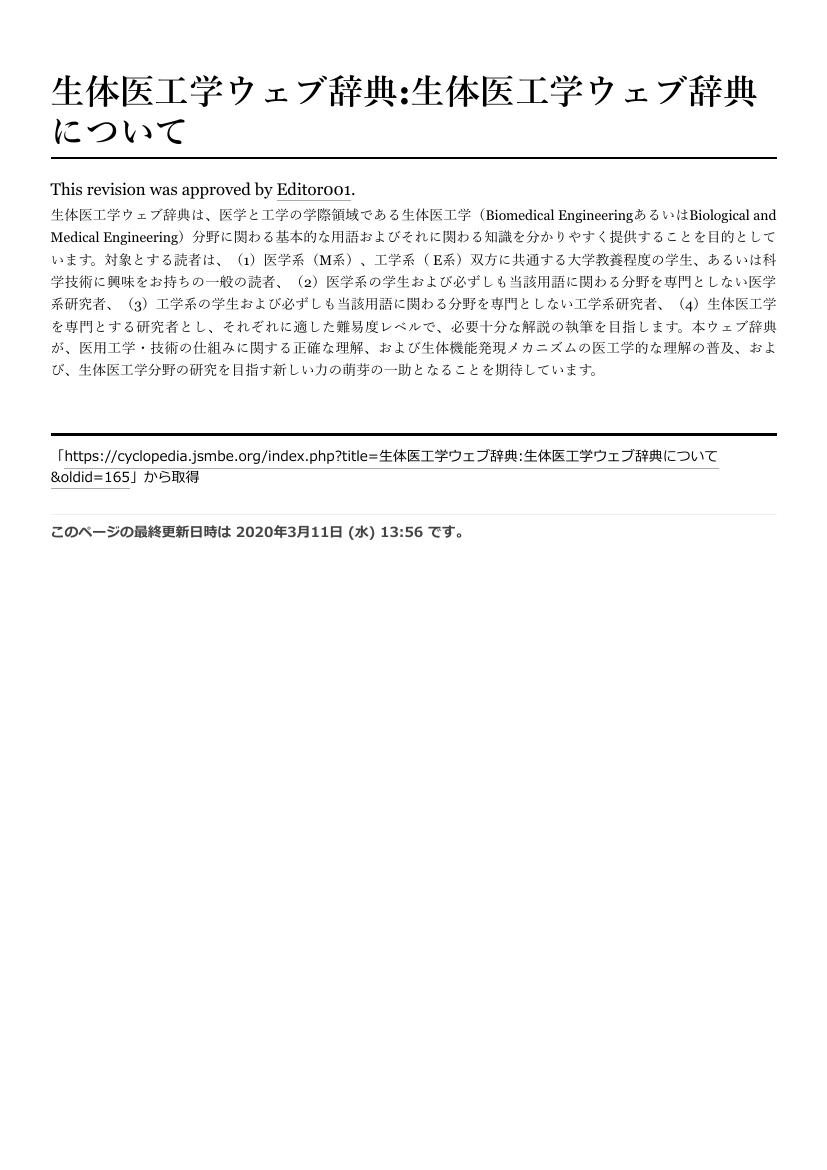2 0 0 0 OA 生体医工学ウェブ辞典(第一分冊)
- 著者
- 相川 慎也 芦原 貴司 天野 晃 有末 伊織 安藤 譲二 伊井 仁志 出江 紳一 伊東 保志 稲田 慎 井上 雅仁 今井 健 岩下 篤司 上村 和紀 内野 詠一郎 宇野 友貴 江村 拓人 大内田 研宙 大城 理 太田 淳 太田 岳 大谷 智仁 大家 渓 岡 崇史 岡崎 哲三 岡本 和也 岡山 慶太 小倉 正恒 小山 大介 海住 太郎 片山 統裕 勝田 稔三 加藤 雄樹 加納 慎一郎 鎌倉 令 亀田 成司 河添 悦昌 河野 喬仁 紀ノ定 保臣 木村 映善 木村 真之 粂 直人 藏富 壮留 黒田 知宏 小島 諒介 小西 有人 此内 緑 小林 哲生 坂田 泰史 朔 啓太 篠原 一彦 白記 達也 代田 悠一郎 杉山 治 鈴木 隆文 鈴木 英夫 外海 洋平 高橋 宏和 田代 洋行 田村 寛 寺澤 靖雄 飛松 省三 戸伏 倫之 中沢 一雄 中村 大輔 西川 拓也 西本 伸志 野村 泰伸 羽山 陽介 原口 亮 日比野 浩 平木 秀輔 平野 諒司 深山 理 稲岡 秀検 堀江 亮太 松村 泰志 松本 繁巳 溝手 勇 向井 正和 牟田口 淳 門司 恵介 百瀬 桂子 八木 哲也 柳原 一照 山口 陽平 山田 直生 山本 希美子 湯本 真人 横田 慎一郎 吉原 博幸 江藤 正俊 大城 理 岡山 慶太 川田 徹 紀ノ岡 正博 黒田 知宏 坂田 泰史 杉町 勝 中沢 一雄 中島 一樹 成瀬 恵治 橋爪 誠 原口 亮 平田 雅之 福岡 豊 不二門 尚 村田 正治 守本 祐司 横澤 宏一 吉田 正樹 和田 成生
- 出版者
- 公益社団法人 日本生体医工学会
- 雑誌
- 生体医工学 (ISSN:1347443X)
- 巻号頁・発行日
- vol.Dictionary.1, pp.1-603, 2022 (Released:2022-03-31)
1 0 0 0 OA 吃⾳が⽇常⽣活に及ぼす⼼理的影響とセルフコンパッションの関係に関する予備的調査
1 0 0 0 OA 聴覚性定常脳磁界応答の音楽的期待による変調
- 著者
- 竹下 悠哉 角屋 智香 木村 勁介 松永 理恵 栗城 眞也 横澤 宏一
- 出版者
- 公益社団法人 日本生体医工学会
- 雑誌
- 生体医工学 (ISSN:1347443X)
- 巻号頁・発行日
- vol.53, no.2, pp.84-89, 2015-04-10 (Released:2015-06-25)
- 参考文献数
- 12
We examined whether auditory steady-state response (ASSR), which is known as a lower-order brain response, can be modulated by expectations accompanying the progression of a musical phrase. We fabricated musical melodies consisted of seven tones, the amplitudes of which were modulated at 40Hz, under two conditions:the final (7th) tone was either congruent or incongruent with respect to the musical context of the melodies. Two control experiments were also conducted. The objective of one control experiment was to investigate the effect of the preceding sound (6th) on the final tone (7th) by presenting two final tones (6th and 7th) extracted from the melodies, and the objective of the other control experiment was to investigate the effect of hearing a pitch itself by presenting a tone sequence of ascending and descending scales between A♭5 and C7. The ASSR source strengths were estimated by magnetoencephalography. The strength of the 7th tone of the melodies was significantly larger in the incongruent condition than in the congruent condition. This difference could not be explained by effects of the preceding sound and pitch of the target tone, suggesting that ASSR was modulated by musical expectancy.

